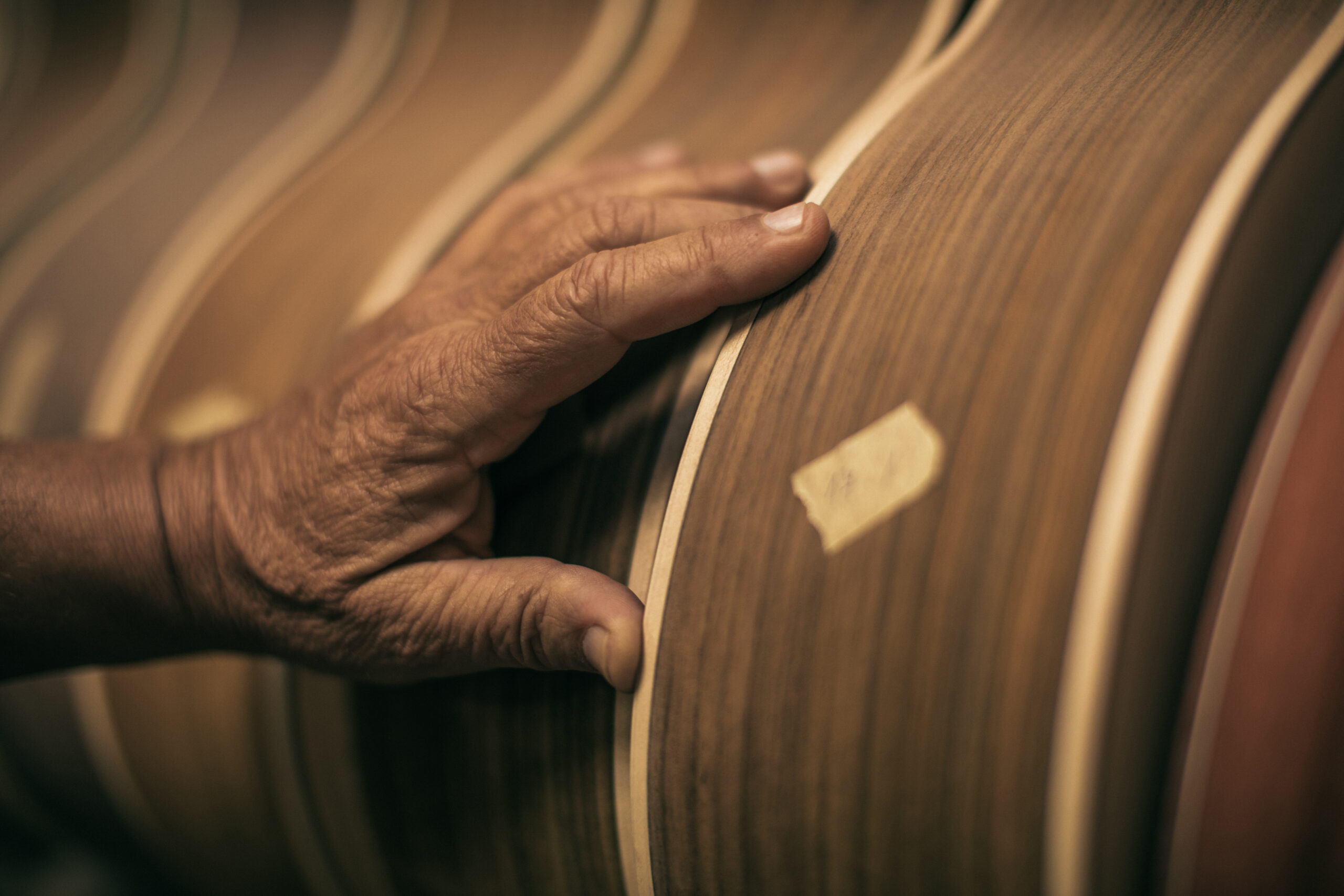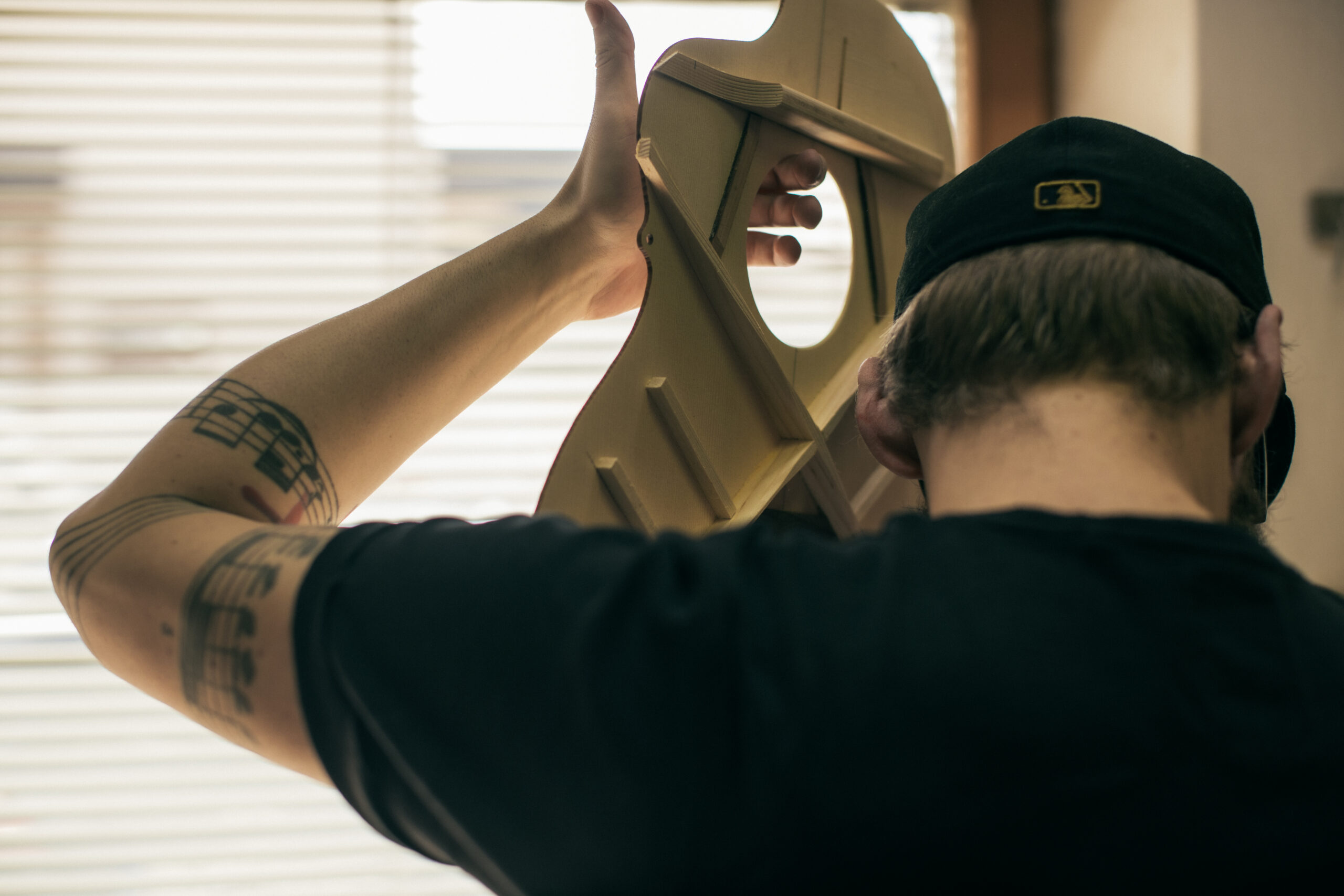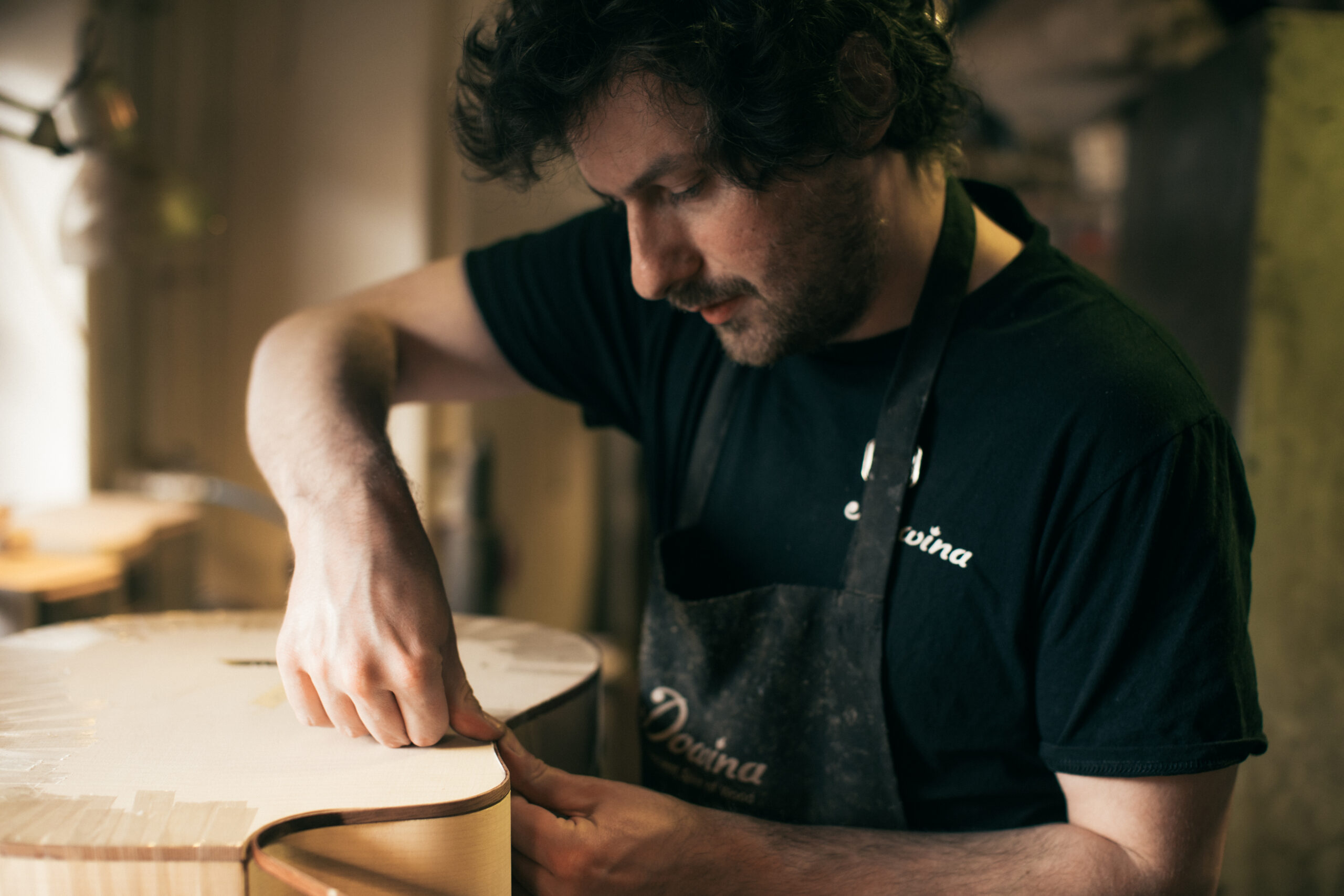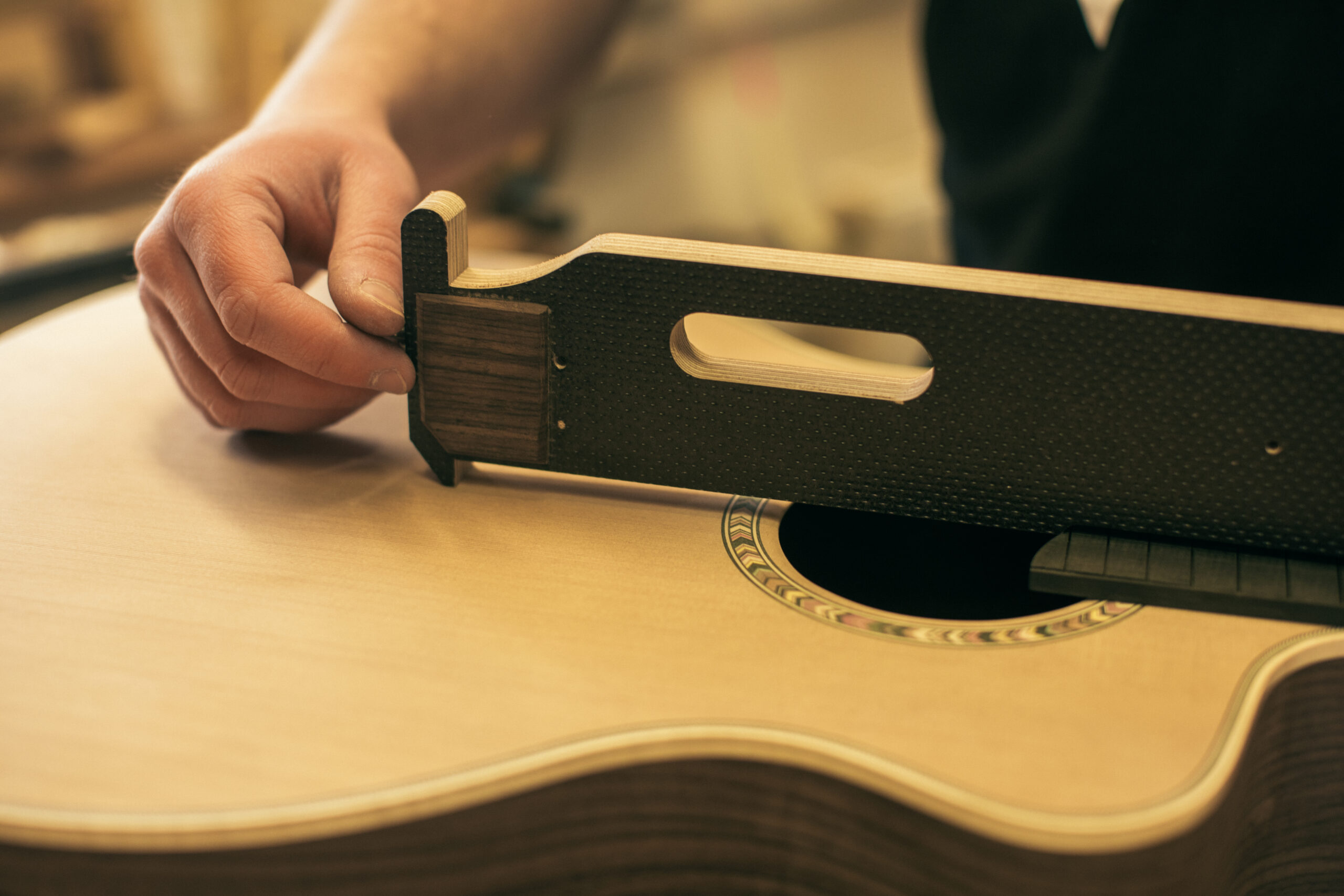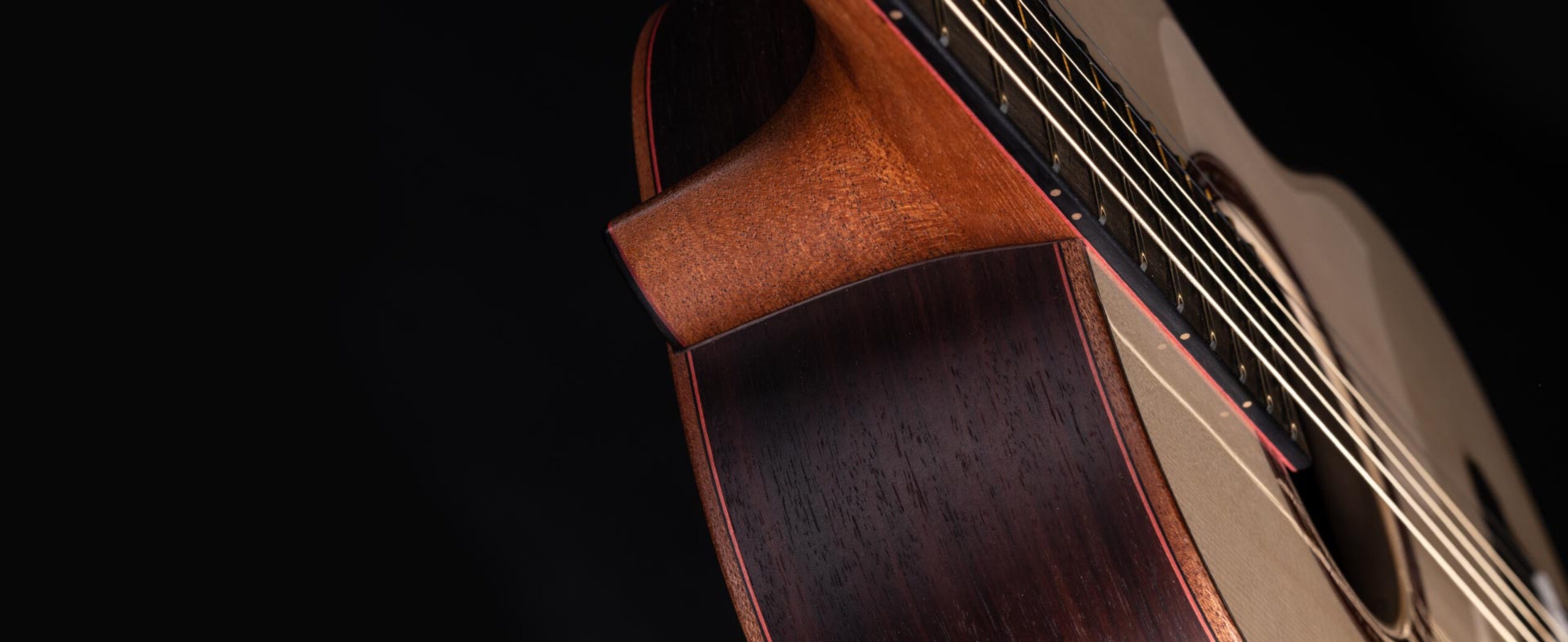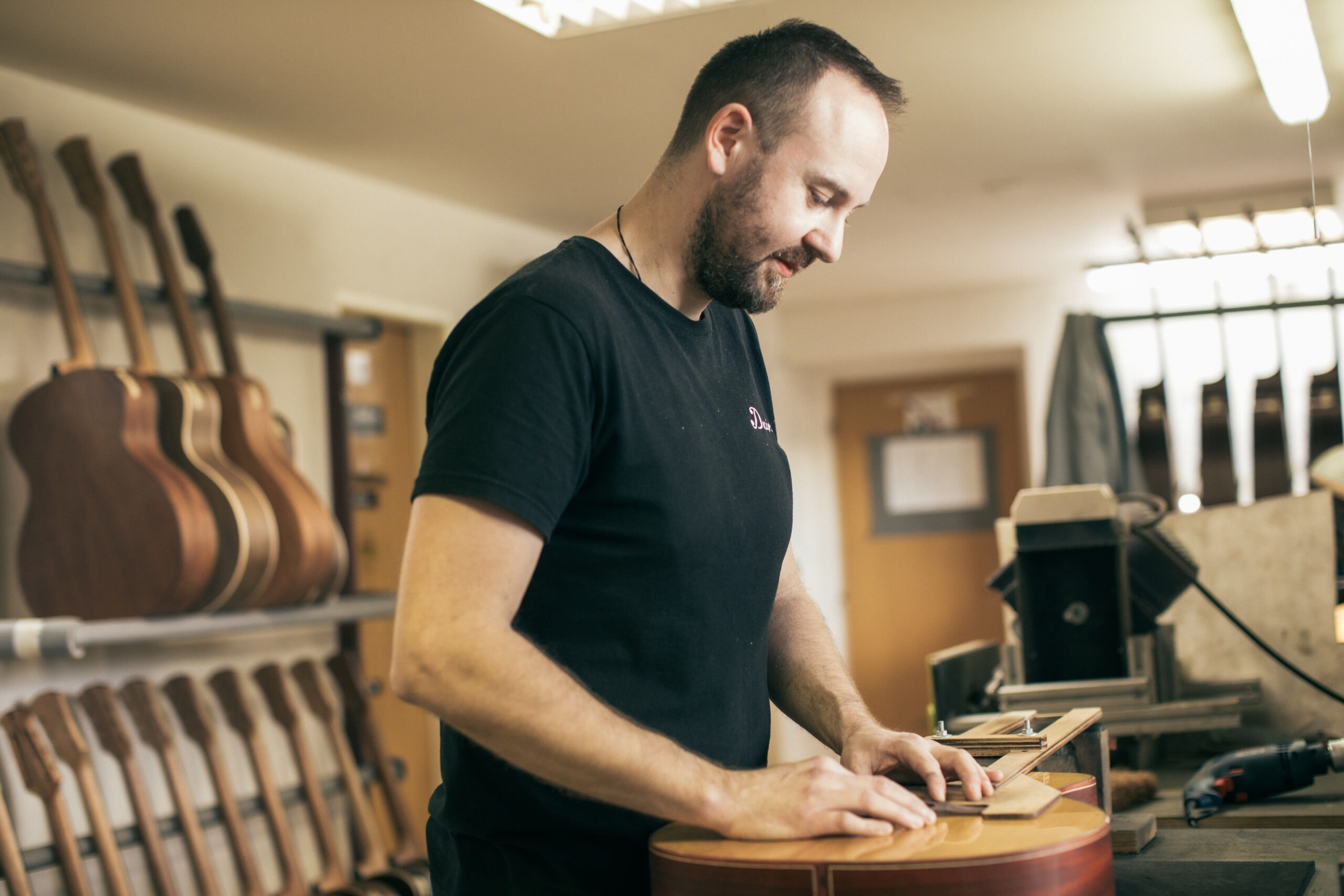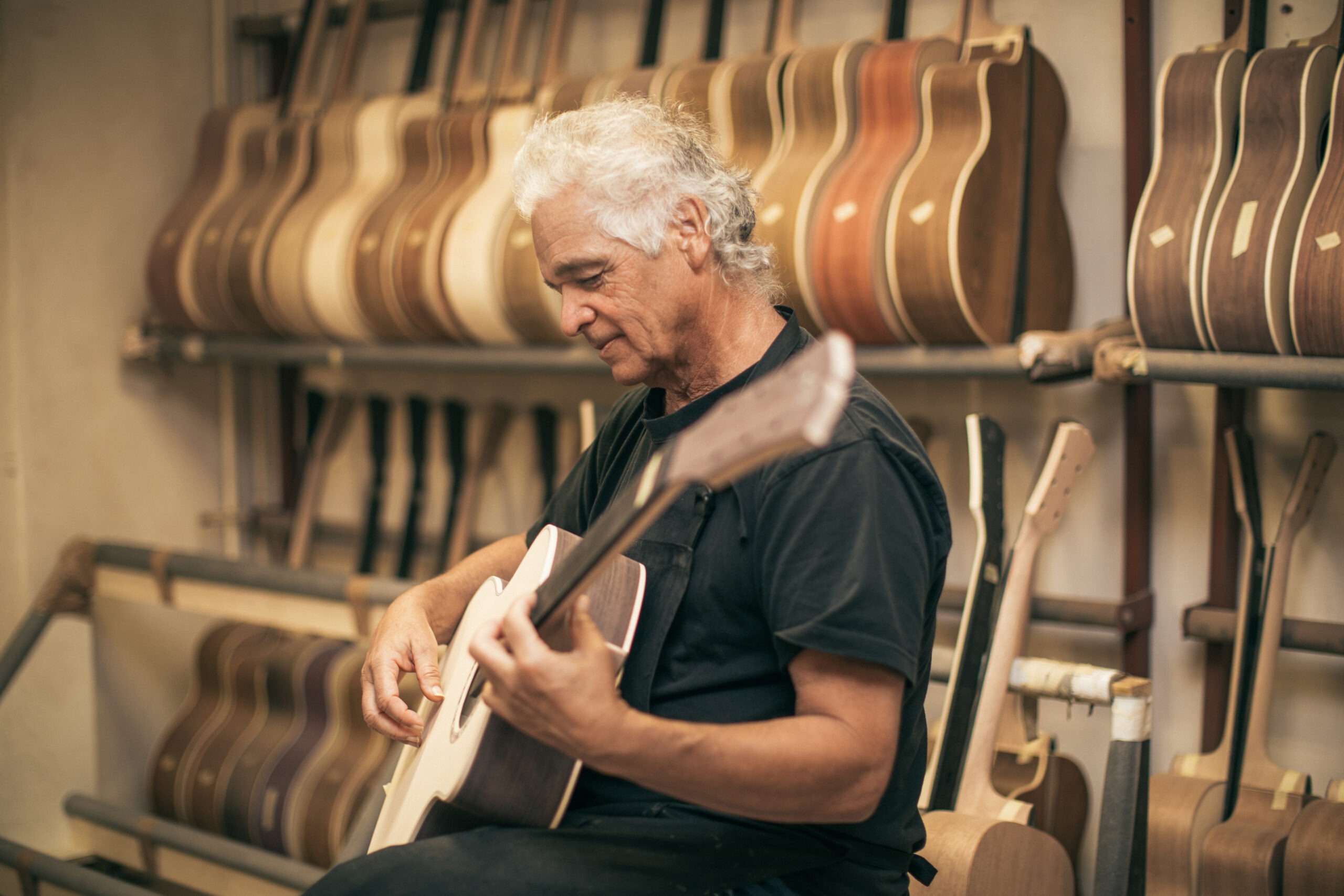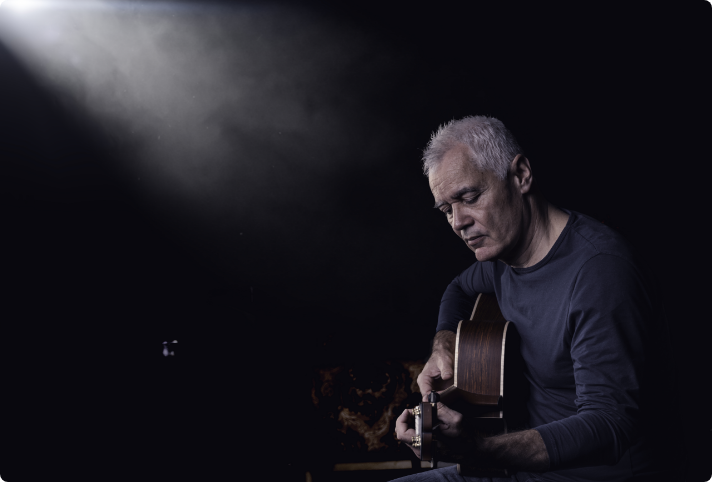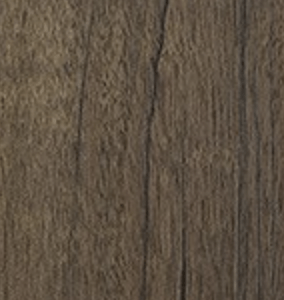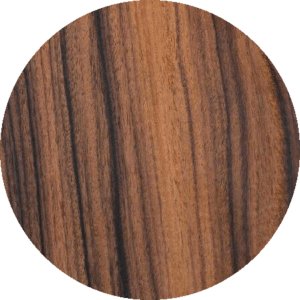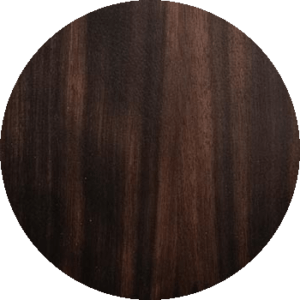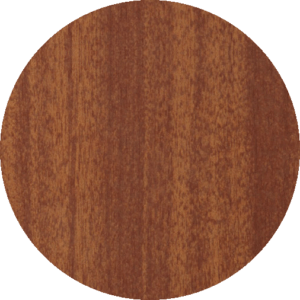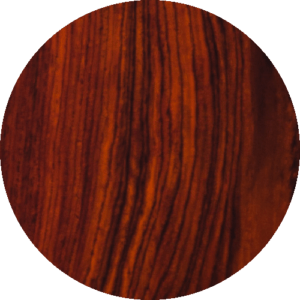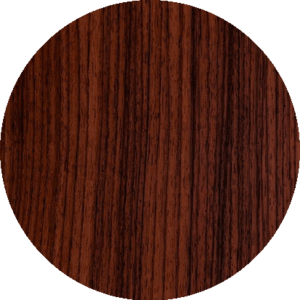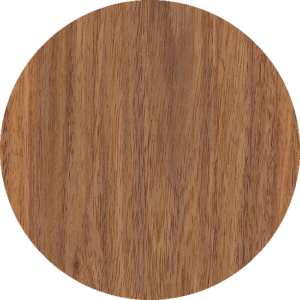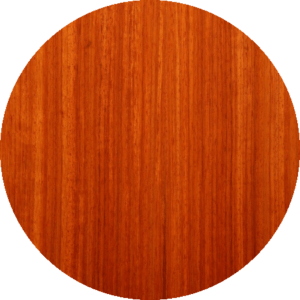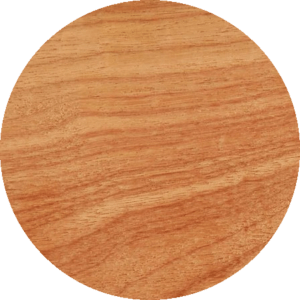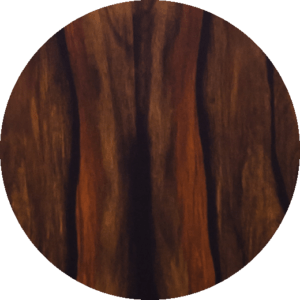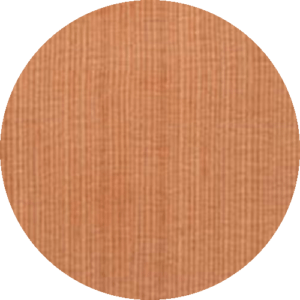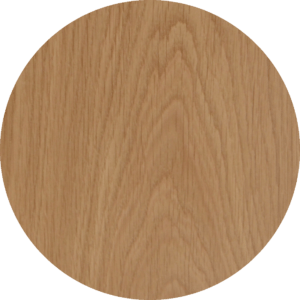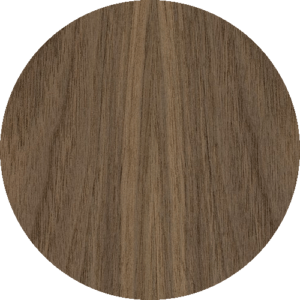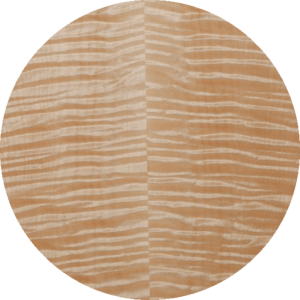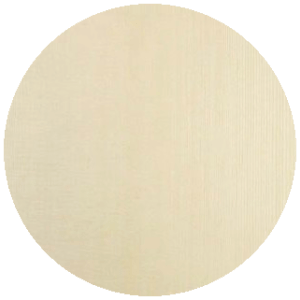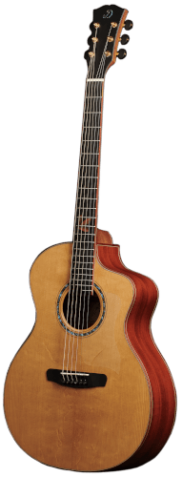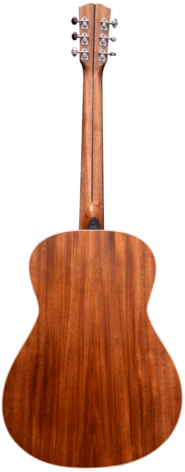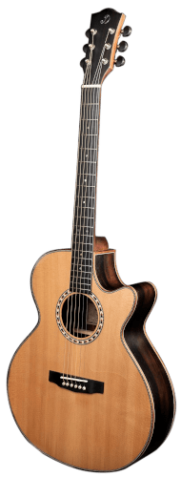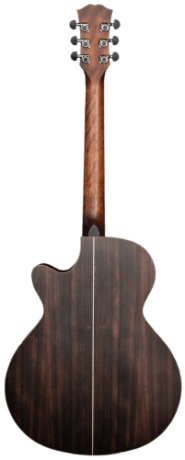Malaysian Blackwood is a top-quality tonewood that works well for all types of guitars. It is denser than most Dalbergias, offering a clear, sustained tone often compared to African Blackwood. However, it is slightly less brittle, and unlike African Blackwood, most sets feature striking dark grain patterns similar to those found in Ziricote or Cocobolo.

Research and Development
Production process
Our tonewood
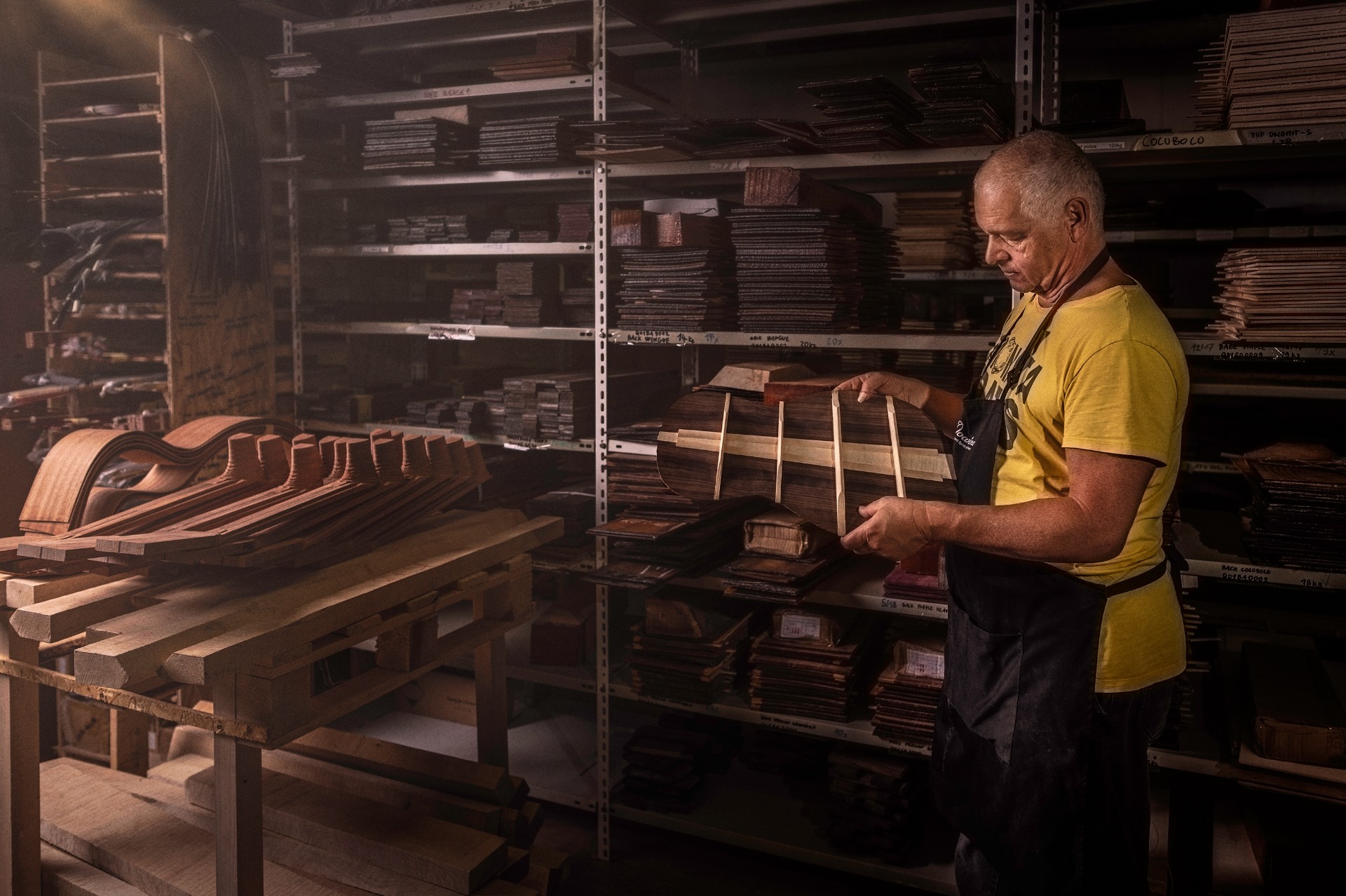
We are always on the hunt for ways to improve our guitars.
S. P. Marinov, Dowina CEO
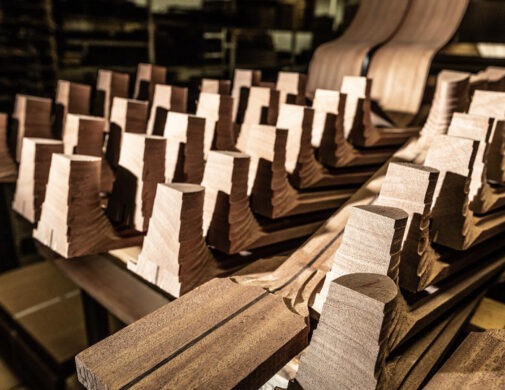
The neck of the guitar is loaded by string tension corresponding to masses of between 70kg to 100kg, equivalent to a fully grown man hanging from it and trying to bend it. Moreover, the neck cross-section at the weakest point is only about 6 cm2. Rigidity and resistance to deformation is therefore a priority. Various metals or composite bracing are used to counteract the dimensional changes caused by the tension of the strings, in other words, to prevent warping. We are aware that even under these extreme tensions, the surface of the fingerboard must retain flatness or a very slight bow, within tolerances of tenths of millimeters. Therefore, the method and point of attachment of the neck is optimised for strength and reliability. A well-designed and manufactured neck means that the instrument will perform as desired for a very long time. We have developed an innovative neck for our concept guitar Aura, which has a 5-piece neck with needle reinforcement and a hidden heel.
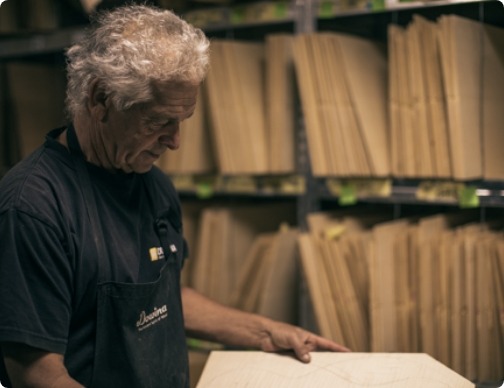
Analysing quantitative data on the properties of timber we use informs the quality of the final product. It enables us to select and process wood in the best possible way Further, results are used to create strict in-house norms using standard materials and optimal manufacturing practices. Analysis allows us to set in place quality control procedures for each operation within the manufacturing process to reduce losses caused by using acoustically inadequate, dry, or poorly processed materials. What this basically means is that we have quantitative data available about how the wood behaves under different environmental conditions and how these influence the resultant sound. The quality of the acoustic palette is influenced by thermal modification, changes in the surface of the wood, or other processes thus in co-operation with Slovak Technical University, our R&D team is constantly experimenting with and evaluating our materials and production methods.
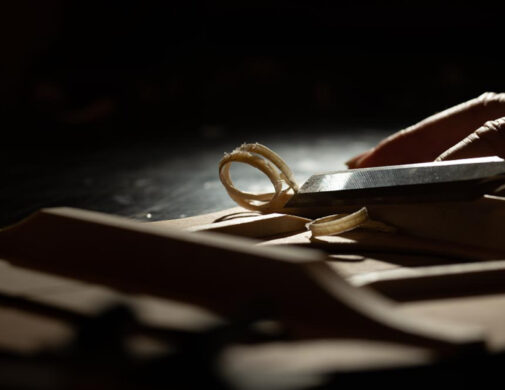
By analysing vibrations, we can evaluate the sound characteristics of a guitar using a number of physical parameters such as acoustic pressure, the spectral composition of a tone, and sustain – the length of decay plus reverberations within the body of the guitar. We do this to better understand what physical properties lead to the subjective feeling of a ‘good’ sound. Sometimes described as ‘colour’, or, more properly, ‘timbre’, the complex harmonics an instrument produces may make sounds that can be described as either light or dark, glossy or matt, heavy or light, warm or cold, and so on so the more information we have, the better we can create acoustic excellence as per customer requirements. We are currently in the process of developing psychoacoustic tests, where volunteers listen to guitars with different measurable variables and select those which they like the best. As we collect more data, we will share the results with you later this year.
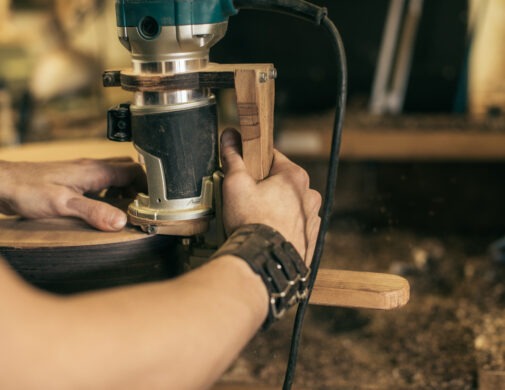
Temperature and humidity fluctuate throughout the year, and some important guitar components change shape and size in response. We monitor the changes these cause and we take steps to eliminate them as much as possible. We are very aware that wood improperly stored can have catastrophic effects on both manufacture and long-term acoustic excellence. Dry or overheated wood can crack, damp timber may warp. Samples of resonant timber with known properties are therefore monitored as to how they respond to changes in climatic conditions during standard production. We have mechanisms in place that allow us to quantify the relationships and mutual influences of environmental parameters on the dimensional stability of the relevant elements of the guitar. Hence, we have precise data to work with and consequently can develop better solutions for our clients.
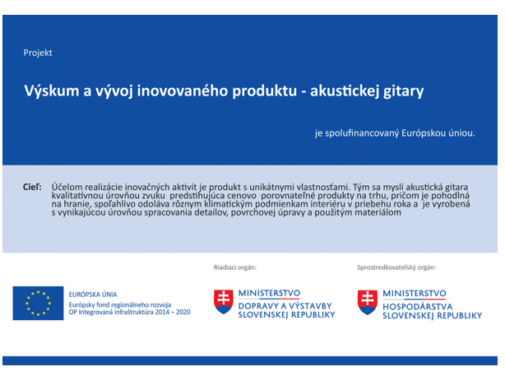
Názov a sídlo prijímateľa: DOWINA, s.r.o., Medená 16, 811 02 Bratislava
Názov partnera projektu: Slovenská technická univerzita v Bratislave
Názov projektu: Výskum a vývoj inovovaného produktu – akustickej gitary
Miesto realizácie projektu: Istrijská 76, Bratislava 841 07 a Radlinského 11, Bratislava 810 05
Kód projektu v ITMS2014+: 313022W068
Výzva – kód Výzvy: OPVaI-MH/DP/2018/2.2.2-20
Operačný program: Integrovaná infraštruktúra
Spolufinancovaný fondom: Európsky fond regionálneho rozvoja (EFRR)
Prioritná os: 10 Podpora výskumu, vývoja a inovácií v Bratislavskom kraji
Cieľ projektu: Účelom realizácie inovačných aktivít je produkt s unikátnymi vlastnosťami. Tým sa myslí akustická gitara kvalitatívnou úrovňou zvuku predstihujúca cenovo porovnateľné produkty na trhu, pričom je pohodlná na hranie, spoľahlivo odoláva rôznym klimatickým podmienkam interiéru v priebehu roka a je vyrobená s vynikajúcou úrovňou spracovania detailov, povrchovej úpravy a použitým materiálom
Začiatok realizácie hlavných aktivít projektu: 07/2020
Ukončenie realizácie hlavných aktivít projektu: 05/2023
Výška zazmluvneného NFP: 425 179,66 EUR
Informácie o Operačnom programe Integrovaná infraštruktúra 2014 – 2020 nájdete na www.opii.gov.sk.
Design your own guitar
Configurator
